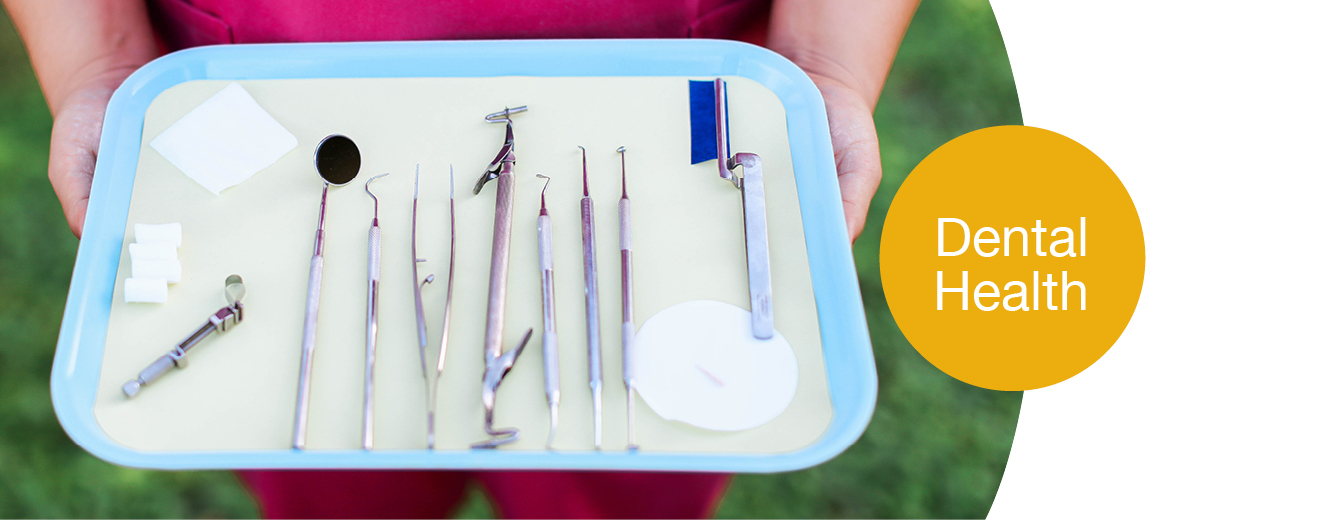
Why Good Dental Health is Important
Innumerable studies and research have concluded on the importance of starting children early in their lives with good dental hygiene and oral care. According to research, the most common chronic childhood disease in America is tooth decay, affecting 50 percent of first-graders and 80 percent of 17-year-olds. Early treatment prevents problems affecting a child’s health, well-being, self-image and overall achievement.
The National Institute of Dental & Craniofacial Research estimates that children will miss 52 million hours of school each year due to oral health problems and about 12.5 million days of restricted activity every year from dental symptoms. Because there is such a significant loss in their academic performance, the Surgeon General has made children’s oral health a priority.
Parents are responsible for ensuring their children practice good dental hygiene. Parents must introduce proper oral care early in a child’s life—as early as infancy. The American Dental Hygiene Association states that a good oral hygiene routine for children includes:
- Thoroughly cleaning your infant’s gums after each feeding with a water-soaked infant cloth. This stimulates the gum tissue and removes food.
- Gently brushing your baby’s erupted teeth with a small, soft-bristled toothbrush and using a pea-sized amount of fluoridated toothpaste.
- Teaching your child at age 2 or 3 about proper brushing techniques and later teaching them brushing and gentle flossing until 7 or 8 years old.
- Regular visits with their dentist to check for cavities in the primary teeth and for possible developmental problems.
- Encouraging your child to discuss any fears they may have about oral health visits, but not mentioning words like “pain” or “hurt,” since this may instill the possibility of pain in the child’s thought process.
- Determining if the water supply that serves your home is fluoridated; if not, discussing supplement options with your dentist or hygienist.
- Asking your hygienist or dentist about sealant applications to protect your child’s teeth-chewing surfaces and about bottle tooth decay, which occurs when teeth are frequently exposed to sugared liquids.
Tooth Decay Prevention
Tooth decay is a progressive disease resulting in the interaction of bacteria that naturally occur on the teeth and sugars in the everyday diet. Sugar causes a reaction in the bacteria, causing it to produce acids that break down the mineral in teeth, forming a cavity. Dentists remove the decay and fill the tooth using a variety of fillings, restoring the tooth to a healthy state. Nerve damage can result from severe decay and may require a crown (a crown is like a large filling that can cap a tooth, making it stronger or covering it). Avoiding unnecessary decay simply requires strict adherence to a dental hygiene regimen: brushing and flossing twice a day, regular dental check-ups, diet control and fluoride treatment. Practicing good hygiene avoids unhealthy teeth and costly treatment.
Sealants
The grooves and depressions that form the chewing surfaces of the back teeth are extremely difficult (if not impossible) to clean of bacteria and food. As the bacteria reacts with the food, acids form and break down the tooth enamel, causing cavities. Recent studies indicate that 88 percent of total cavities in American school children are caused this way.
Tooth sealants protect these susceptible areas by sealing the grooves and depressions, preventing bacteria and food particles from residing in these areas. Sealant material is a resin typically applied to the back teeth, molars and premolars and areas prone to cavities. It lasts for several years but needs to be checked during regular appointments.
Fluoride
Fluoride is a substance that helps teeth become stronger and resistant to decay. Regularly drinking water treated with fluoride and brushing and flossing regularly ensures significantly lower cavities. Dentists can evaluate the level of fluoride in a primary drinking water source and recommend fluoride supplements (usually in tablets or drops), if necessary.
Thumb Sucking
Sucking is a natural reflex that relaxes and comforts babies and toddlers. Children usually cease thumb sucking when the permanent front teeth are ready to erupt. Typically, children stop between the ages of 2 and 4 years. Thumb sucking that persists beyond the eruption of primary teeth can cause improper growth of the mouth and misalignment of the teeth. If you notice prolonged and/or vigorous thumb sucking behavior in your child, talk to your dentist.
Here are some ways to help your child outgrow thumb sucking:
- Don’t scold a child when they exhibit thumb sucking behavior; instead, praise them when they don’t suck his or her thumb.
- Focus on eliminating the cause of anxiety – thumb sucking is a comfort device that helps children cope with stress or discomfort.
- Praise them when they refrain from the habit during difficult periods.
- Place a bandage on the thumb or a sock on their hand at night.

